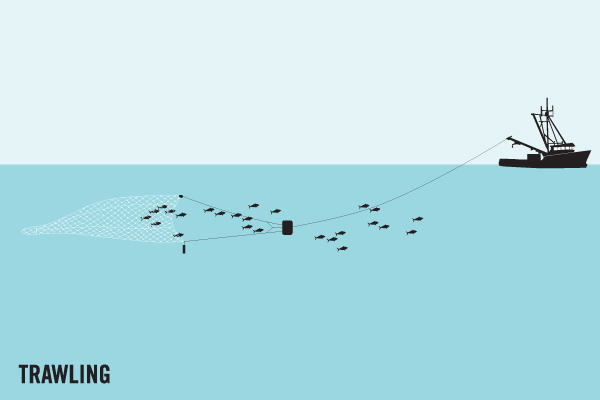Average Weight/Length
Lemon sharks are one of the larger species of sharks, commonly obtaining lengths between 95-120 inches (240-300 cm). and have a growth rate of .21 inches/year (.54 cm/year). The maximum length that can be reached by this species is between 125-135 inches (318-343 cm). From around 20 pounds to well over 100 pounds. World record 405 pounds;
Other "Popular" Names for this Fish
Brown Shark
Location Habitat
Lemon sharks are mainly found along the Southeastern coast in the United States. Forages a great deal over shallow flats and along shorelines; likes mouths of rivers and creeks. Spends time in deeper waters like channels and bays, but not for offshore, as a rule. The Gulf of Mexico is also a prime location for them. They have been known to migrate to places including West Africa. You will notice them more in the summer months when they tend to migrate. Occurs on continental and insular shelves, frequenting mangrove fringes, coral keys, docks, sand or coral mud bottoms, saline creeks, enclosed bays or sounds, and river mouths. May enter fresh water. Occasionally moves into the open ocean, near or at the surface, apparently for purposes of migration. May rest motionless on the bottom. May occur singly or in small groups. Feeds mainly on fish but also takes crustaceans and mollusks. Viviparous, with 4 to 17 young in a litter. Size at birth 60 to 65 cm. Has been involved in several attacks on people.
Biology & Physical Description
Some chuckle at the name given to the lemon shark until they see one. This shark is yellow in color which is where the name derives from. They mainly stay close to the surface of the water. They also prefer water that is moderate or warm compared to the colder waters. Most people are very curious about lemon sharks due to their color. They are basically loners but they sometimes form small groups. They have been known to attack people from time to time. It is believed this is done out of fear and not aggression. There have only been 22 reported lemon shark attacks on humans with each person surviving. The have a magnetic sensor in their nose that allows them to attract prey and to find others to mate with. They depend on this sense of smell because they have very poor eyesight. Without that sensor they would have a very hard time surviving. Females and males reach sexual maturity around 6-7 years of age and at 95 inches (240 cm) and 88 inches (224 cm) respectively. Pups are between 24-26 inches (60-65 cm) at birth. Lemon sharks feed on various types of fish that are found in the waters. Mainly they stick to small prey that aren’t able to put up much of a fight. When meat can’t be readily found the lemon shark will even end up feeding on mollusks and crustaceans. They don’t require a large volume of food due to their small size so they can go quite a while without feeding. The lemon shark has one of the most peculiar colors of all the species. With a yellow color and white on the belly it is distinctive and won’t be mixed up with other species of sharks. They are a small species of sharks with the largest ones no more than 10 feet. A brownish shark with yellow overtones but no conspicuous markings. Large second dorsal fin nearly same size as first dorsal
Life Cycle & Mating Behavior
Distinct pairing with embrace. Viviparous, placental, with 5 to 17 embryos. Both male and female during precopulatory and courtship swim with body axes in parallel. During copulation, the pair performs coordinated swimming
Geographic Species Map (Fishbase.org Map)
|
|

|
Summary of Distribution: Western Atlantic: New Jersey, USA to southern Brazil, including the Gulf of Mexico, the Bahamas, and the Caribbean; also in Gulf of Mexico. Northeast Atlantic: Senegal, Côte d'Ivoire and probably wide-ranging off West Africa, but this requires confirmation. Eastern Pacific: southern Baja California, Mexico and the Gulf of California to Ecuador. |
|
Note: Distribution range colors indicate degree of suitability of habitat which can be interpreted as probabilities of occurrence (fishbase.org) |
|
Sport Fishing Techniques
|
|
Kite Fishing (Rig)A Kite Fishing Rig is.... |
|
|
|
Kite Fishing (Trolling)Kite Fishing Trolling is when you are.... |
|
|
|
River DriftRiver Drift means to use the.... |
|
|
|
TrawlingTrawling is when.... |
|
Tackle & Baits
Spinning and baitcasting outfits; also fly outfits. Will take a variety of live and dead natural baits and artificials.
Game Rating
Game Rating : 7.5/10
Game Description :
Less spectacular but otherwise pretty much the equal of the Blacktip as a light-tackle gamester.
Food Rating
Game Rating : 7.5/10
Game Description :
Meat is utilized for human consumption, hides for leather, fins for shark-fin soup base, liver oil for vitamins, and carcasses for fish meal. Marketed fresh, dried-salted and frozen
Picture (Fish)
|
|
|
|
|
|
Picture Mount
|
|
|
|
|
Product Specs
Available Sizes: 22 in. - 106 in.
Details: Fired-Enamel Glass Eye




















 Lemon Shark
Lemon Shark 






.jpg)

.jpg)
.jpg)


